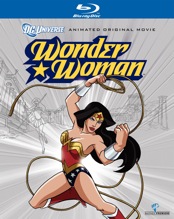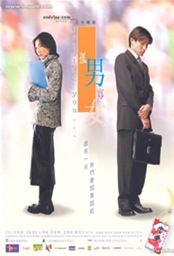I don’t like horror movies, and I don’t like B-movies, but I guess I can’t go so far as to say “I wouldn’t watch them if you paid me,” because that’s effectively what happened here. While Shakespeare Behind Bars intrigued me, I dragged my feet a bit on these films, as neither really struck my fancy; having finally sat through both, I’m here to give each one a unfair shake (after all, my professor did suggest that I could at least make use of the films for my blog, although she had in mind the earlier, film-only version).
I’m also going to spoil both films, as I don’t think the plot is really the point. If for some reason you think you might go check these out, please avoid, good sir or madam.
 The Masque of the Red Death
The Masque of the Red Death
Roger Corman, UK, 1964
Viewed on DVD, Aug. 4
Judging by, well, Wikipedia, this flick takes a to-the-point Edgar Allan Poe setpiece allegory about the indifferent rich getting their just deserts at the hands of a personified plague, and drags it out to feature-length with an aimless “seduction” plotline (with an even more marginal and inexplicable subplot about the arguably excessive revenge of a little person, appropriated from yet another Poe story).
The seduction aspect ultimately takes over the film, turning the source material into something of a morbus ex machina rather than the central thrust of the piece. Prince Prospero (a hammy yet engaging Vincent Price), you see, is an honest-to-the-devil Satanist, while his prey, Francesca (a fetching yet grating Jane Asher) is a sincere-if- naive Christian; predictable conflict ensues. The devil worship seems to have been introduced mostly because that’s the kind of thing a horror film’s villain should be into, and it’s hard to tell if Satanism is supposed to be a metaphor for the depravity of the nobility (doubtful, since none of Prospero’s guests are “believers”) or if words like “metaphor” just shouldn’t be used when talking about this film.
Despite the overblown subject matter, the content itself is only really shocking or excessive on one or two occasions, both of them involving Prospero’s scorned mistress, who pitifully tries to plunge herself deeper into Satanism in order to get Prospero to pay attention to her again (mercifully, we are spared the unfortunate spectacle of cat-fighting between her and the heroine, despite some early hints).
The experience is far from painful, but when it comes down to it, you’d only watch this if you were a connoisseur of Roger Corman shlock (don’t laugh; a lecturer at UCR teaches an entire course on Corman!).
 The Mephisto Waltz
The Mephisto Waltz
Paul Wendkos, USA, 1971
Viewed on DVD, Aug. 20
And yet, Corman’s film starts to seem fun and exciting in comparison to this lackadaisical, modern-day (for the time) “suspense” film. It strikes me that suspense can go pretty far as an excuse to drag things out, as the premise of the film, namely possession, doesn’t even come to the surface until about a half-hour has passed! What’s interesting is that, just as I was asking “is it over?” on a regular basis, they managed to throw in a few twists that, while not groundbreaking, were at least exponentially cleverer than the incessant build-up we’d seen for most of the movie. The truth is that the filmmakers were not able to create suspense, and although the devil seems to be involved, they didn’t have an actor like Price capable of selling it with a straight face, so it’s just a bit boring (they do soft-pedal the subject to some extent, but they still want to make a show of how twisted the main villain and his daughter are). Since they couldn’t present an interesting villain or maintain effective suspense, they might as well have focused the film around the set of reversals that occur near the end. As it is, they haven’t focused on much of anything! Let’s just say that if you are feeling bored or curious, you will feel more bored and less curious after watching this! I never would have finished it if I wasn’t being paid.
Well, maybe it just sucked because it wasn’t really meant to be a B-movie, but ended up as one anyway (both care under the “Midnite Movies” series of DVDs, two films per release). At least Corman knew what he was making, and deployed the campiness accordingly.

 Shortcomings
Shortcomings Ponyo
Ponyo Wonder Woman’s always been a problem. Either because her origins are just a little too “weird,” or just because editors and writers keep botching her (probably some of both), she has the odd position of being officially placed in DC Comics’ “big three” while simultaneously being far less “iconic” than Batman or even the increasingly-unpopular Superman. A Wonder Woman feature was always going to be a challenge, and with Joss Whedon being fired from the project, it’s likely to be a challenge that Warner Bros. will fail at (either by making nothing or by making something like Halle Berry’s Catwoman).
Wonder Woman’s always been a problem. Either because her origins are just a little too “weird,” or just because editors and writers keep botching her (probably some of both), she has the odd position of being officially placed in DC Comics’ “big three” while simultaneously being far less “iconic” than Batman or even the increasingly-unpopular Superman. A Wonder Woman feature was always going to be a challenge, and with Joss Whedon being fired from the project, it’s likely to be a challenge that Warner Bros. will fail at (either by making nothing or by making something like Halle Berry’s Catwoman). Needing You
Needing You The Fog of War
The Fog of War Julie & Julia
Julie & Julia District 9
District 9 Serenity
Serenity